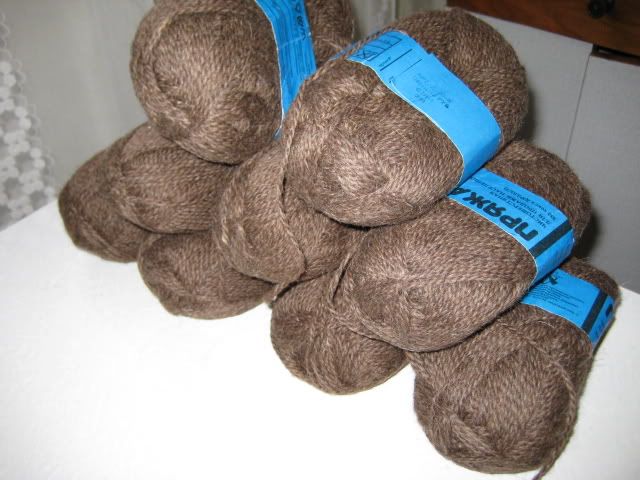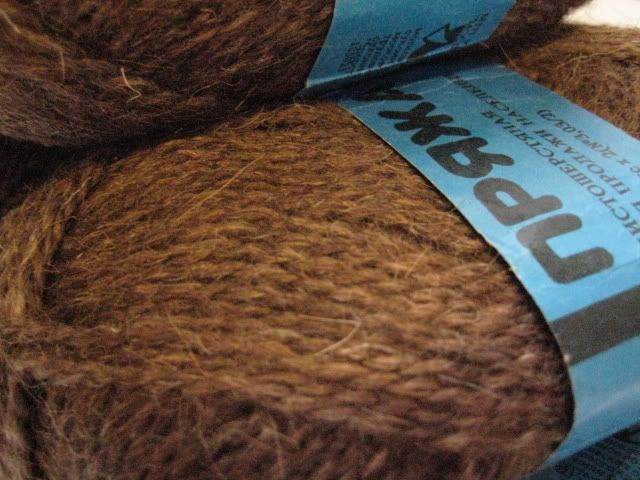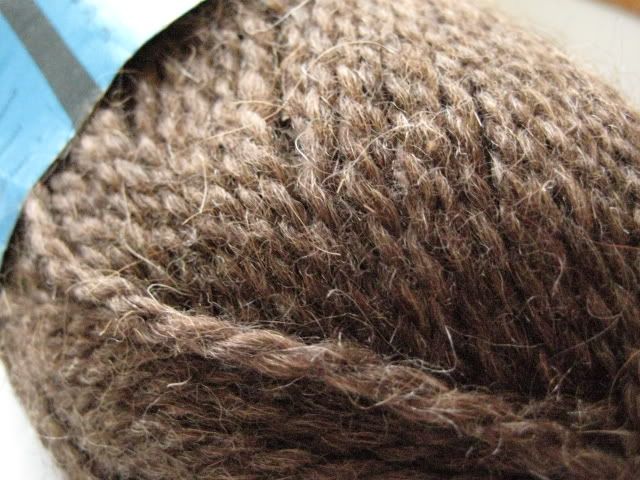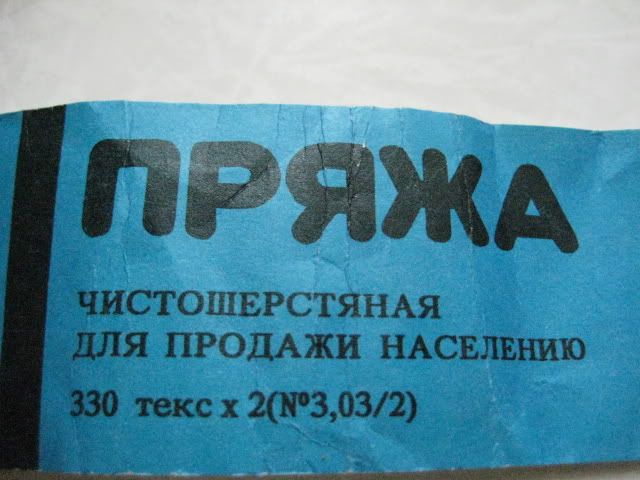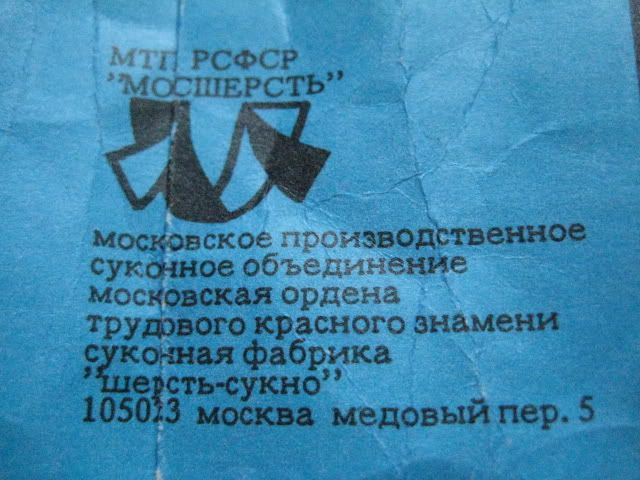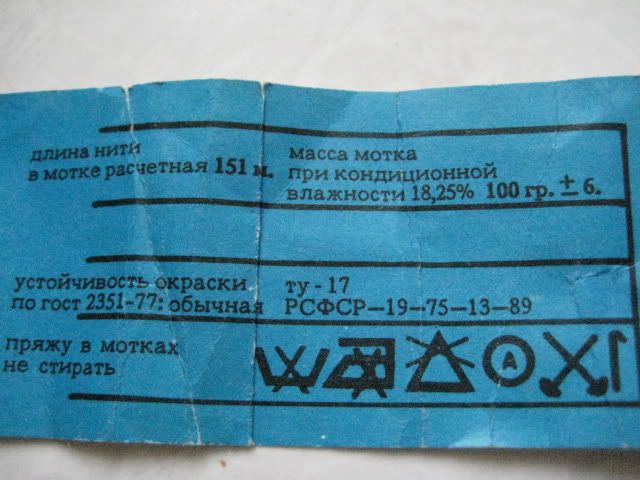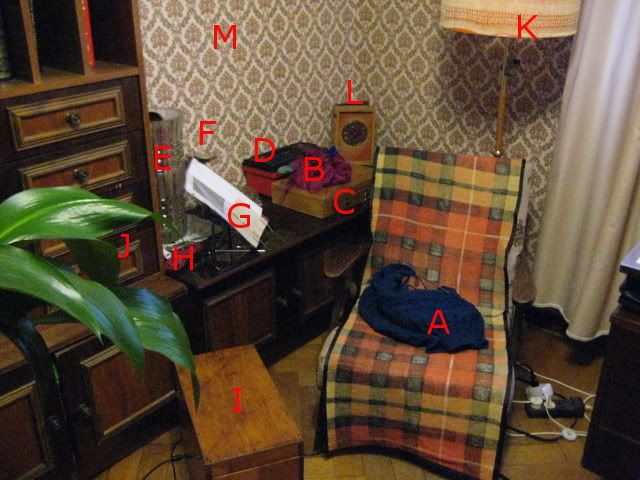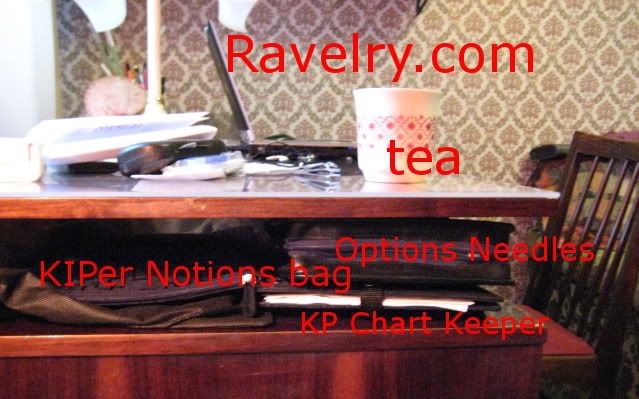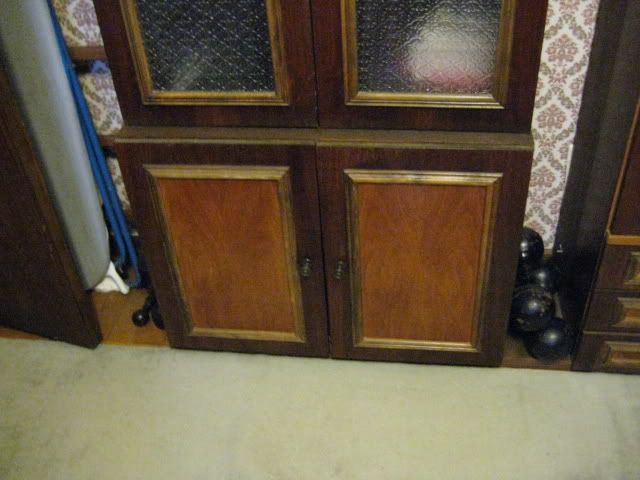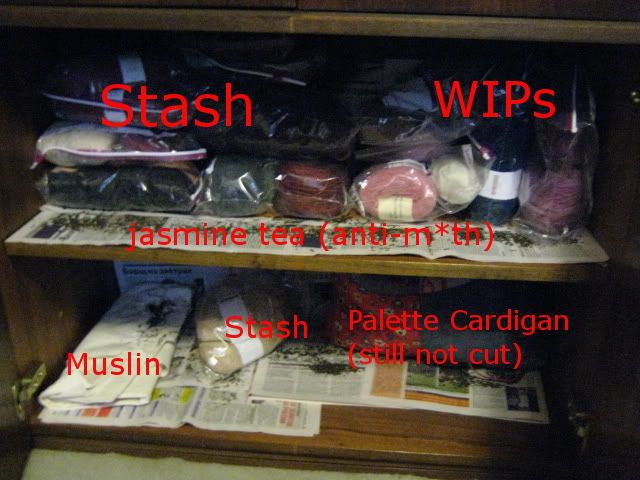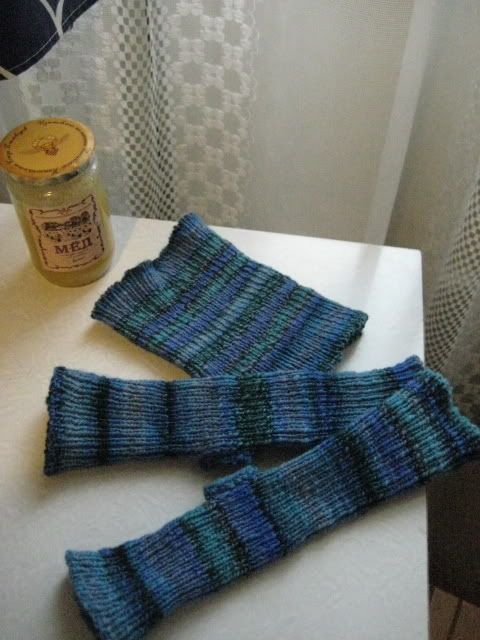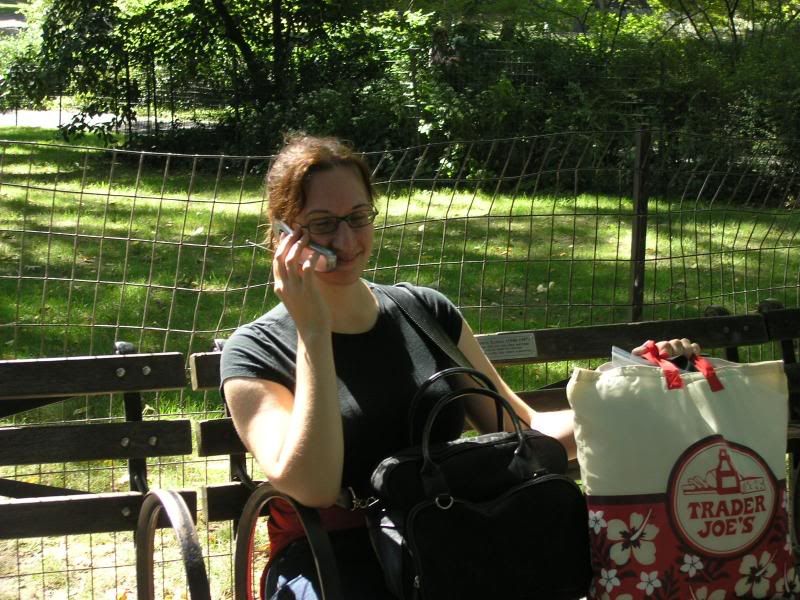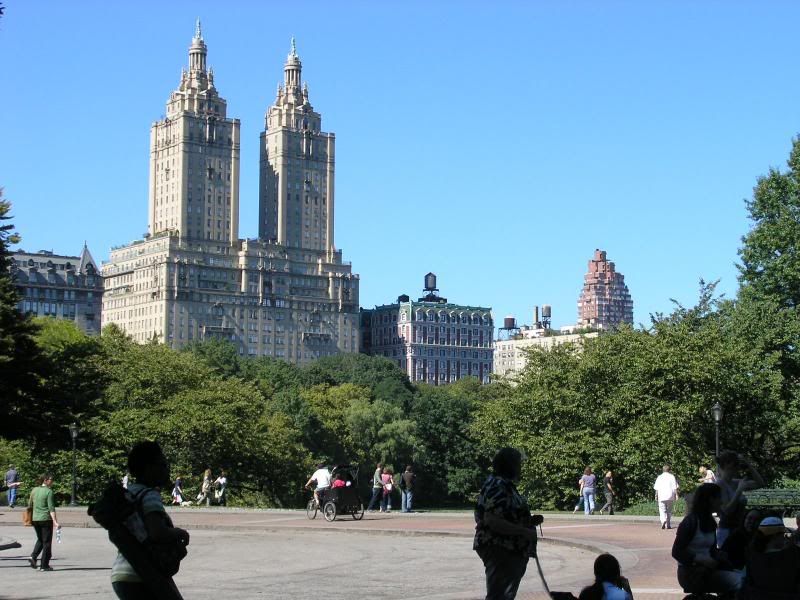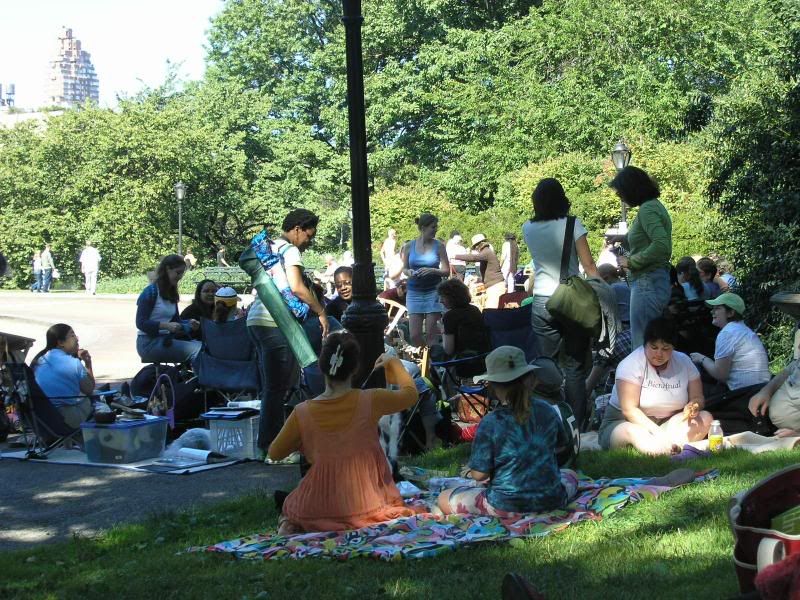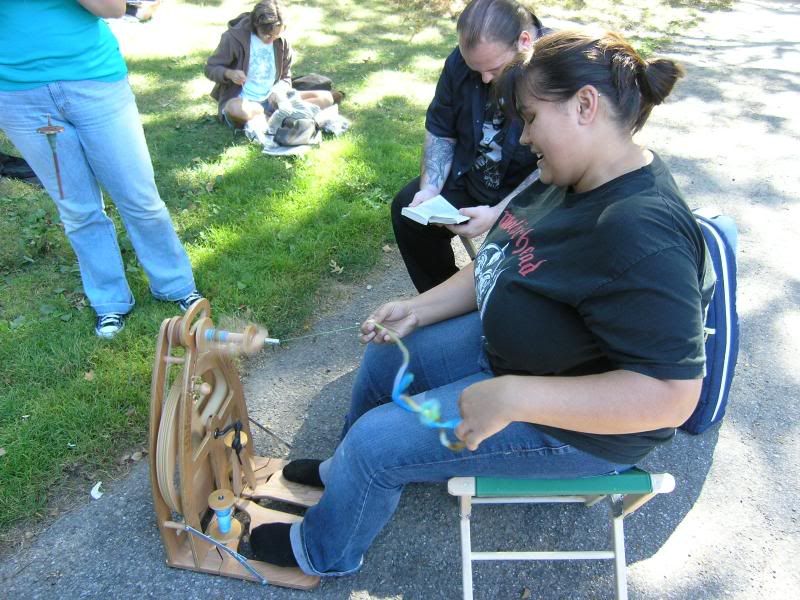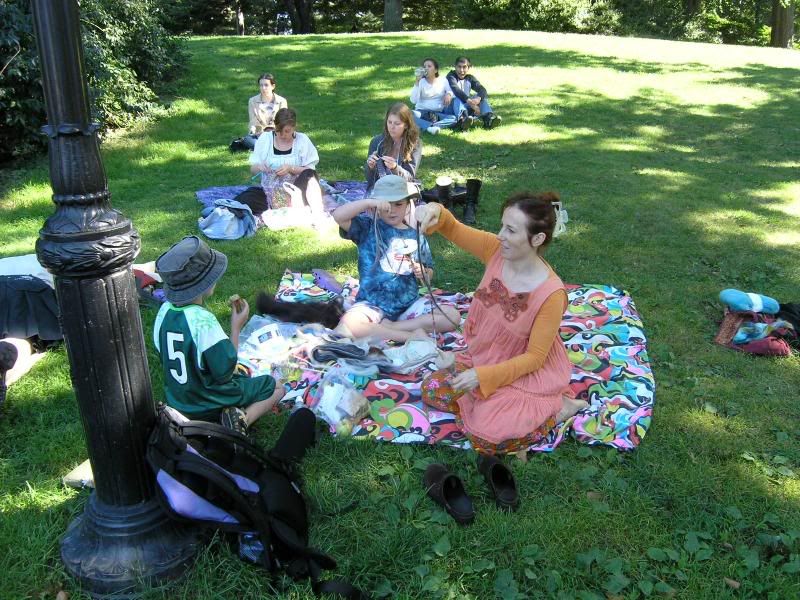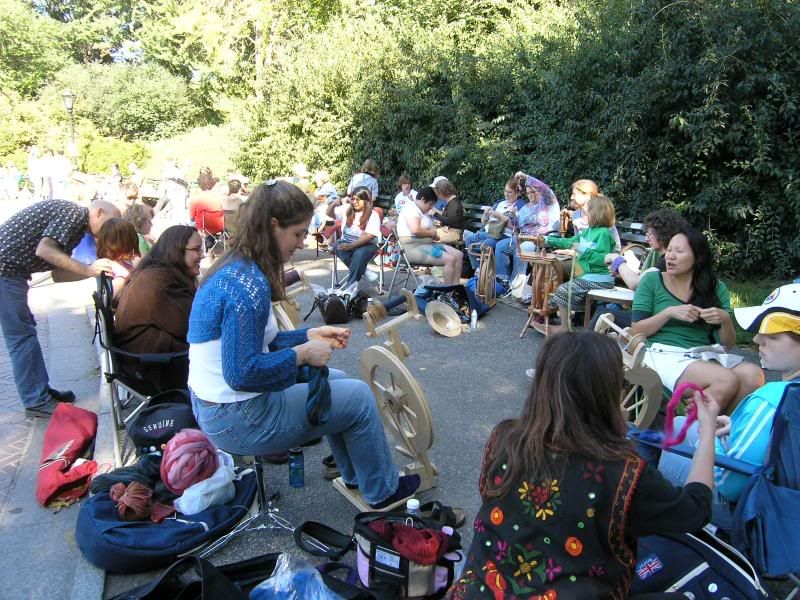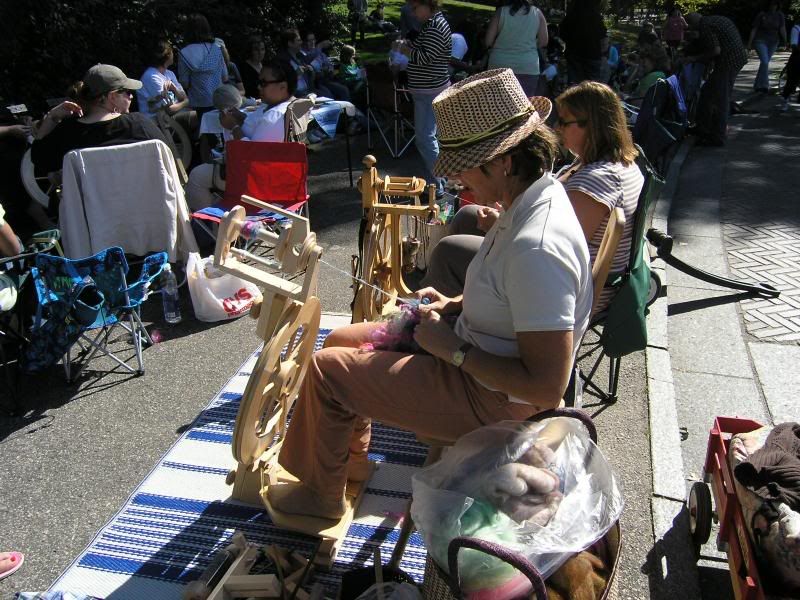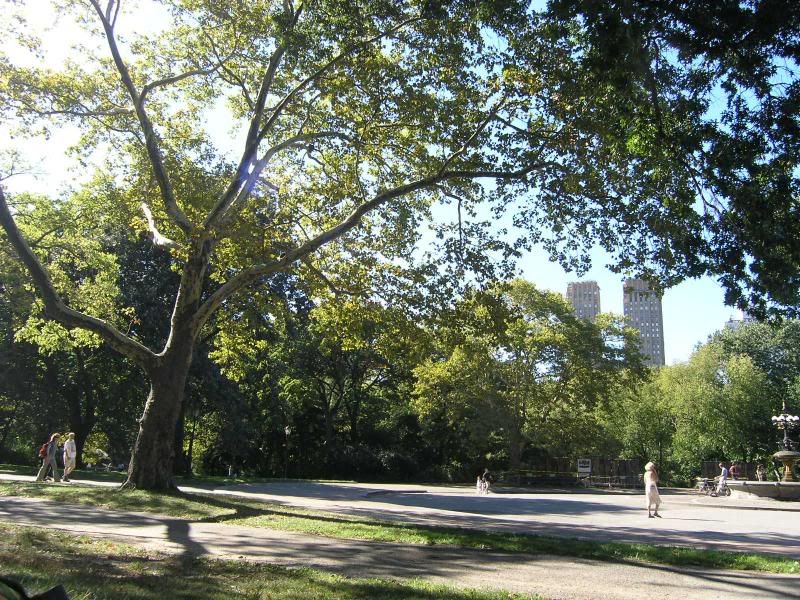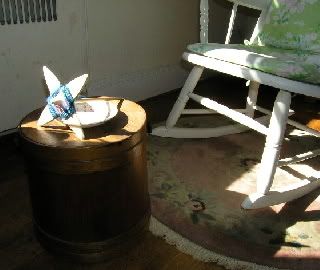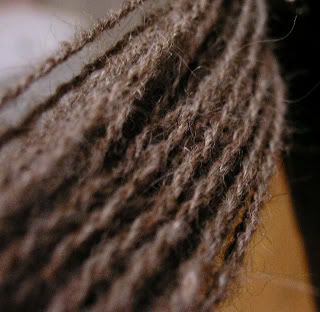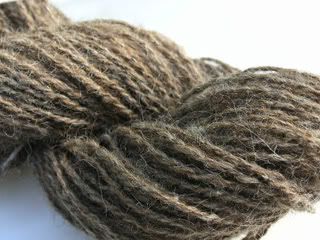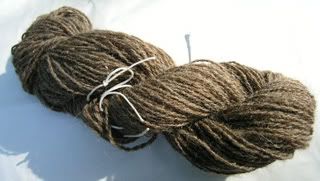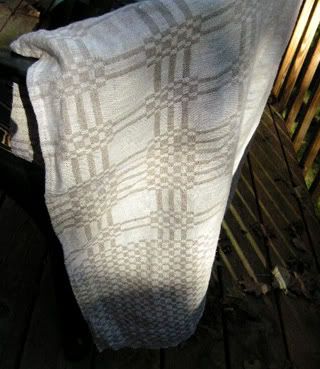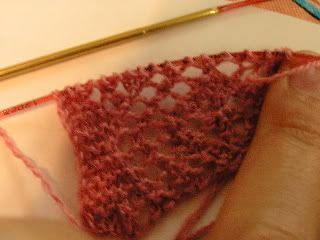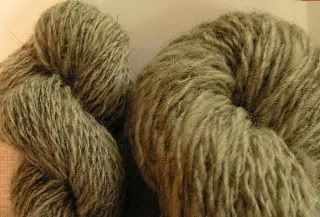(you thought I'd never really get around to posting this after promising it for so long, didn't you?)
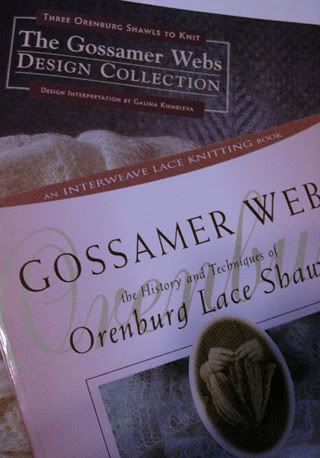
Actually, first I just wanted to say to those of you who are reading on Bloglines or some other reader to totally go check out the comments on the last post. The discussion of the terms "flax" and "linen" continues, and there's lots of cool new information there. You guys rock! Also, goodies from
Beth came in the mail today, and I spent the whole day dyeing with kool-aid. Details to come! Also possibly that video of the sheepdogs from the fiber festival, since blogger has conveniently just added a button for inserting videos. That'll have to wait till I have wireless access for the upload, though. Onward!
Okay, I'm finally ready to give you a full review of the wonderful
Gossamer Webs: the History and Techniques of Orenburg Lace Shawls by Galina Khmeleva and Carol R. Noble (available from your usual sources or from Galina herself at
Skaska Designs). I'll also explain what's in the companion book,
The Gossamer Webs Design Collection and then go into a rant about Richard Rutt's
A History of Handknitting (Interweave Press, 1987).
Wait - what? an unrelated book from 1987? Yeah, I know - trust me, they're connected, I'll get to it.
First, Galina's book. As you know if you've been reading this blog, I just took lessons with Galina Khmeleva on Orenburg lace spinning and knitting, but I got the first book,
Gossamer Webs, before taking the lessons. I bought the
Design Collection book after taking the lessons, and I'll explain why below.
Those of you who have been reading will also know that I've been getting more picky about knitting books of late, and that the ones I really feel are worth investing my money in these days are books that provide not just patterns and pretty pictures (both of which I use largely for inspiration, as I follow patterns straight from books fairly rarely), but books that provide solid, detailed, well-researched information that isn't available elsewhere (i.e., for free on the internet). That is to say that I'm no longer content with generalized run-downs of basic principles, and I'm completely out of patience with the sort of book that is 1/3 how-to-knit and 2/3 very unoriginal patterns in expensive yarns. I've given you some examples before of the kind of knitting book I want and love (Big Girl Knits, No Sheep for You, Victorian Lace Today, etc), and I'm happy to see that the knitting book market does seem to be shifting in this direction as the huge numbers of people who started or re-started knitting have acquired a vast range of new skills very quickly with the help of the internet. All good stuff, which makes me so excited sometimes that I tie myself up in knots of excitement and joy.
Gossamer Webs, though not at all a new book (1998!), is a perfect example - perhaps even the apotheosis - of what I now look for in a knitting book.
(Oh, I know, I'm totally a sucker for anything historical and anything Russian and anything about knitting, and this is a book about historical Russian knitting. But really, I'm about to explain why it's a really great book for other people, too.)
First, Galina really did her research. She is a native-born Russian whose career has always been in textiles, and who has been researching Orenburg lace knitting, specifically, since before the collapse of the Soviet Union in 1991 (and the subsequent closing of the Orenburg lace cooperative in 1995). She has spent a considerable time in Orenburg, getting to know the knitters and earning their trust. In the years since then she has painstakingly interpreted, recorded and disseminated the techniques that have been taught orally in Orenburg for centuries, so that they will never be entirely lost even if the original Orenburg lace tradition is unable to continue (though at the moment the knitters are still hanging on, with the help of those like Galina who bring attention to their work and, to the small degree that is possible, bring the authentic Orenburg shawls to Western buyers, as Galina does when she travels for teaching and fiber festivals).
Gossamer Webs is an extraordinarily comprehensive book, admirably covering the historical, social and economic aspects of the Orenburg lace tradition as well as the technical details of spinning and knitting the shawls while sharing throughout a palpable sense of who these knitters were and are.
In order, the chapters cover:
- a brief overview of the history of the Orenburg region - this will easily and comfortably orient readers who don't have any previous background on Russia;
- a history of the Orenburg shawls in particular, with a somewhat mythical account of where they began (because nobody knows) and a very well-documented and fascinating narrative of their popularity in the Victorian period (one shawl hangs in the Victoria & Albert museum) and the ups and downs of the industry after the 1917 revolution;
- profiles of muligenerational current Orenburg knitters, whose stories themselves serve as a history of their region in the - shall we say "eventful" - 20th century, as well as of the evolving tradition of the shawls, including the circumstances in which they were and are created;
- a translation of an excerpt from a Russian-language book on the shawls which offers a lively account of how shawls are sold by the knitters in the Orenburg market;
- a brief account of Galina and Carol Noble's own "shawl-buying party" in Orenburg;
- a chapter on the goats and their special down (it's not cashmere because Orenburg didn't join the cashmere association -- it's goat down of a quality equal to or better than "cashmere," depending of course on the goat and how it's been processed);
- a chapter on spinning, on unique Russian spindles (this might be enough information for a very experienced spindle spinner to replicate it, but the rest of us really need to take the lessons);
- a chapter on shawl design explaining the traditional motifs and structures and how they are manipulated by individual knitters;
- instructions for a swatch shawl that teaches basic construction (again, there's enough info here for an experienced lace knitter to make a beautiful Orenburg-style shawl, but if your ambition is to make it just the way they make them there, including the same grafting and corner techniques, etc, you should take Galina's classes);
- a stitch and border dictionary (Orenburg shawls are designed as permutations of a small set of basic motifs, so this is a dictionary of those motifs, which you could re-arrange in infinitely varied patterns in your own shawls);
- instructions and charts for one large medallion shawl (it's very big);
- and finally some reference material, including sources for recommended alternative fibers available to Western spinners and knitters, a bibliography, and two pages of photos showing an imaginative variety of ways to wear the shawls.
In short, it's meaty, comprehensive, unique, and inspiring. Here are a few things that get me particularly excited about it:
- I love hearing about the knitters, in detail and often in their own words. These are not superficial, "oh, I've been knitting for 50 years and I love it" kinds of profiles, but rather really gripping stories about women of different ages, ethnicities, different levels of education, different careers and different life experiences who all share a lifetime of Orenburg lace knitting, and the profiles taken together offer a substantive, if open-ended, discussion of what that shared tradition means, to the knitters and to their community.
- The knitting is presented in context: not only is there history here, but we also learn about the goats, and how they are tended, and how their fleeces are processed (by the whole family), and how the women first spin the yarn they need, and then how the finished shawls are blocked, worn, used, and marketed, both within the Soviet-era cooperative and through what was once a black market and is now an open and unregulated market (with the advantages and disadvantages of the change fully covered in all their ambiguity).
- I love these pictures:
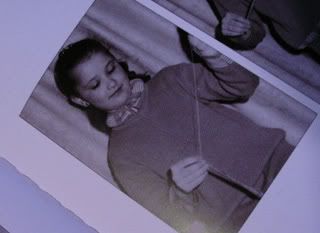
If a girl of this age can do all this so confidently, surely I can too?
- As a book about a particular regional tradition, it's important to me that the region in question is not simplified, sentimentalized, idealized, or demonized - as western "popular" works on non-western regions sometimes are. This book takes its subject seriously, covers it in depth and without prejudice (more on this below). Since I've been studying Russian language, literature and history (going on 15 years now) and living in Russia (a total of about 2.5 years now, and I'm off for another year in a few weeks) my family and friends are often puzzled by my very mixed feelings about Russia. Western accounts of Things Russian are often either very rosy (i.e., rhapsodizing about the culture and art while closing all eyes to the more complex economic and social context) or very, very demonizing (i.e., it's an Evil Empire, or more recently a third-world backwater, and everything there must be shoddy, or shady, or both, etc). The thing is, it's a complicated place, and it's history is complicated and it's hard to talk about any of it fairly in a western context because what little information Americans have about Russia is limited, at best, and totally wrong at worst. Of course, this can be said about any place, and there are certainly countries with even more frought histories (and presents). But because of the Cold War and the capitalism-communism clash of ideologies, Americans and Russians in particular sometimes have more than the usual difficulty in seeing each other clearly.
I very rarely see an English-language, popular, non-scholarly work of any kind or any length about Russia that does not make me want to puke, strangle the author, or at the very least shake my fist pointlessly and spew bad language.
Galina's book, however, does a simply stunning job of letting the ambiguities be ambiguities without sacrificing clarity for an audience that has not been to Russia and that has gotten its information hitherto from pretty poor sources. Of course, you might expect this from a book written by a Russian who has lived a long time in the U.S., but it's more rare than you might expect - the emigre experience carries its own baggage, and it's just plain not easy to maintain any kind of balanced perspective while being clear at the same time.
So, in other words, this book doesn't pander to a Western audience by making us feel all warm and fuzzy and cleverer than some backward peoples who let their traditions almost die for lack of political sense ('cause god knows Americans are full of sound political sense...r i g h t...? er, sorry). It also doesn't pander to Russian sensibilities or nationalism by inflating the Orenburg tradition to make it the greatest, most innovative and complex lace tradition ever (again, see below), or by pretending that the Soviet-era lace cooperative (and modernity in general!) didn't play a significant role in bringing on changes that were ultimately destructive to the lace tradition and to the knitters. In reality, the book shows through its historical narrative and the profiles of the knitters how the 20th century, with its official state-run cooperative, brought with it social and economic security for knitters during difficult times and a means of reinvigorating lace design (i.e., one knitter who worked for the cooperative invented a system of charting to help teach other knitters and to streamline the knitting of more shawls) even while, at the same time, the same cooperative brought on other steamlining methods that reduced the quality of the fiber and robbed the knitters of important means of control over their livelihoods. Even more stark, though, is the change brought on by the collapse of the Soviet government and the mis-managed transition to quasi-"capitalism" in the 1990s - in reality, it's a free market run by robber barons in which the little people like Orenburg knitters are left with unprecedented freedom to knit as they like, sell where they like...but no security, no access to most markets, and increasingly expensive raw materials, leaving them prey to unscrupulous middlemen with an interest in quick profits for low-quality goods.
This tells us a great deal about much more than Orenburg lace knitting, and in my humble opinion as an academic historian of the region and an occasional American traveler in Russia, it's a masterful book.
Okay, now for a quick break I'll tell you about the companion book before going into rant mode:
Theoretically,
Gossamer Webs contains everything an experienced knitter and spinner would need to know to create an authentic shawl on their own. Between the swatch, the stitch dictionary and the one sample pattern, I thought at first that I could do this (although, strangely, I wasn't anxious to start right away). Then I got really lucky, and had the opportunity to take Galina's classes. The classes gave me the confidence to know that I could, indeed, make an Orenburg shawl of my own (though perhaps not from handspun just yet), and all the skills I needed to make it the way it's done in Orenburg down to the smallest detail. However, seeing as how I don't really enjoy frustration and confusion that much, I ultimately decided to also invest in the
Design Collection book as well. This book re-prints the swatch instructions and the stitch and border dictionary that are in the main book, but also has detailed, text-and-chart instructions for three finished shawl designs: a triangle, a palatine rectangular 'scarf' (stole, really), and a medallion square of the same type, but different design, than the one in the
Gossamer Webs book. Sure, I could probably come up with a pretty combination of the motifs from the stitch dictionary on my own, and I could probably work them into the triangle shape with some effort (I thought at first that I wanted a rectangle not a triangle, but then I learned how big these suckers are), and I could probably more or less maintain concentration while knitting both the border pattern and the interior pattern along with the new techniques for shaping corners and edges and everything...but then I could also probably be a brain surgeon if I really tried hard enough. But since I faint at the sight of blood and have no hand-eye coordination, it would really be better for everyone if I didn't, ya know? I feel that way about designing my own Orenburg, too. I think I'm going to make a couple from instructions first, then start playing with designing. So I bought the design collection, so I can follow the charts for a basic, traditional triangle pattern and have the written instructions to fall back on when I forget the details of what I learned in class about how to deal with corners and how to join the border on the long side. So...I wouldn't say that either the classes or the
Design Collection are essential, if you're experienced and confident and intrepid. But your loved ones might really appreciate it if you did indulge in just a little extra information to fall back on.
Okay, now what does all this have to do with Richard Rutt's classic book,
A History of Handknitting?
Rutt's book is to date the only one that attempts a comprehensive history of handknitting, and it is indeed an useful compendium of the technical historical details known at the time it was written. For that, I really do appreciate it very much. If nothing else, there's a great deal there to serve as a starting point for other writers who, I hope, will someday synthesize the huge amount of material on ethnic knitting traditions that has been compiled in the last couple of decades together with emerging social histories of textiles and other information to someday write a true comprehensive history of handknitting. However, Rutt's book, with the exception of only a few pages, is actually only a history of British knitting, and possibly just of Shetland knitting - its attempts to treat other traditions are appallingly inadequate and sometimes downright offensive (for some reason such sections almost always conclude in an unfavorable comparison to the Shetland tradition with which the author was clearly much more familiar than any other).
I know that publishers usually choose titles, and they usually push to make books as general as possible in order to garner a wider audience. So I don't entirely blame Rutt. But there's also a rather long history of what I call "British armchair historians." It's not that I have anything against amateur historians. There's no reason a person can't train themselves in the habits, methods, sources and literature required to write reliable, rigorous history. Having myself taken the traditional route of the PhD program, I can and have ranted at length about how many important skills formal training
doesn't give you. So, when I toss off the term "British armchair historians" I'm not talking about amateur historians - I know of several good amateur historians who I rank among the best historians generally, British and not. Rather, I made up that term to describe a particular type of historian (with or without a degree), who is recognizable according to the following characteristics:
- They write history for popular consumption, but instead of interpreting this kind of writing (as I would) as requiring the same accuracy and rigor as academic writing but greater clarity, larger context, and better style, they instead interpret popular history as being free of the constraints of accuracy, fairness, respect for intellectual property, and sometimes rationality while being rather inconsistent as regards clarity and style.
- While sometimes telling a good story, they usually dispense with an explicit argument. This may sound like a point in their favor at first, because arguments are usually set out so clumsily in academic prose. But they don't need to be clumsy, and the truth is that a story without an argument is a story without a word as to what the story means. This may be okay. What is not okay is that in practice there's almost always something in there - even if it's between the lines - as to what the story means, and if it's not explicit, it's implicit. An implicit argument is insidious, because it affects the way the author presents the story without telling you how and to what degree. A particular perspective has been employed in selecting which parts to tell and how, but the reader has no idea what the assumptions were. The reader is being told to believe a tale that is purported to be "real" without having any sense of what the tale is based on or what was left out.
- They are unduly prone to think of England as the center of the universe and the rest of the world as a series of quaint little backwaters either ripe for the plucking, in need of civilizing (i.e., Anglicizing), or both. I assume this is a legacy of the Empire, but it's disgusting. (And yes, I know the English are not the only ones to take on this attitude by a long shot - I live in NYC after all! But even New Yorkers, when they write a history of NYC, call it "a history of NYC," not "a history of the world")
The implication of my term, then, is not that the historian in question is an amateur, but that the historian, metaphorically speaking, never leaves his or her comfortable armchair.
Sadly, Richard Rutt is a classic example of a British armchair historian, most especially as regards the third characteristic.
But here's my particular beef, which brings me to the connection with
Gossamer Webs. Rutt's book contains a little over two columns of one page of text on knitting in Russia, which makes it one of the most extensive sources on the subject available in English. Some of this text is useful, but you should be aware that the author's unwarranted assumption that knitting probably did not "flourish" in Russia before Catherine the Great's "Volga German" immigrants brought it with them in the eighteenth century is simply false, and actually rather offensive, too (obviously, he doesn't think people as barbarian (read: Eastern [cf. Edward Said on Orientalism {ooh, flashback to freshman lit, sorry}]) as Russians could possibly come up with knitting without some help from a few nice Germans. Oh, lord preserve me from the British. (Except when I'm in an anglophilic mood - I do love my Jane Austen!)
Later research into knitting traditions around the world has firmly established that handknitting has a long, complex, and fascinating parallel history nearly everywhere on the planet, and Russia was not excluded.
Rutt mentions the tradition of shawl-knitting from the Orenburg province of Russia, adding little other than that such shawls feature "uncomplicated patterns." For those who have not yet been privileged to see a traditional Orenburg shawl in person, I recommend that you take a look at Galina's book next time you see it in a store or the library, and then think about what Rutt said (and mind you, he must have been able to see an original shawl in the Victoria and Albert museum). Here's my theory as to what made him say this (never mind that the statement is utterly gratuitous and could simply have been left out if he just didn't know anything). Having read Rutt and
Victorian Lace Today and various other works on lace from an Anglo-American perspective, I know that historians trace a development in English - usually Shetland - lace knitting from patterns with only unidirectional decreases to those with matched decreases. Now, one of the very first things historical training is meant to teach you is to watch out for the word "development." Before the professionalization of history and many other changes in 20th-century scholarship, people (mostly privileged, white, Anglo-American people, but also a lot of others) tended to see "development" as a movement upwards and onwards, from something less 'good' to something more 'good,' rather than as simply movement...along...but not particularly directional. So, an armchair historian of this school who knows the history of Shetland lace and knows how to identify the age of a shawl design by whether it has unidirectional decreases (older) or matched descreases (newer), might look at a shawl from another part of the world and, seeing only unidirectional decreases, that armchair historian might conclude that the shawl in question is of a type less developed, and therefore less 'complicated', than shawls that feature matched decreases.
Does this sound like shoddy logic to you? Like laziness? Like not ever leaving your mental armchair?
How about this instead:
Anglo-American lace is marvelously complicated because the matched decreases, not to mention other techniques, like 3-into1 and 3-into-2 decreases, stockinette versus garter backgrounds and other variations culled from many foreign influences, make it possible to do just about anything a designer could wish. It's particularly lovely for mirror-image small motifs and is very easily (not to say necessarily) adapted to charting.
Orenburg lace is superficially simple in that it's always done on a garter ground, the borders are always edged with 5-hole teeth, and the decreases are unidirectional. Designs are almost always permutations of only about 10 basic elements, themselves made up exclusively of YO and k2tog. However, just as knitting itself is the act of infinitely varying only two basic stitches (or one stitch and its reverse) the mathematical simplicity of Orenburg lace principles forms the groundwork for infinite variation. Because there are only YOs and k2togs you can count by holes rather than stitches and rows. Because there are only 10 easily memorizable basic elements, you can (with experience) design on the fly, almost painting in lace as you move up a shawl, improvising combinations and recombinations of elements, because you are thinking, knitting and counting in elements rather than in stitches and rows. Because the elements are so simple, just like the knit and purl stitches themselves, you can combine them into any kind of pattern: representational, geometric, organic, etc. Because all borders are reducible to the mathematically perfect 5 holes (with the 5th hole of one tooth as the first hole of the next), the knitter can vary the width and complexity of the border design adjoining the teeth to an infinite degree, on the fly, without affecting the structure of the shawl or the method of turning corners.
Oh, and because Orenburg is so bloody cold, Orenburg goat down is among the warmest and softest fiber in the world.
And because Russia has long been a much poorer country than, say, England, traditional Orenburg techniques and tools are marvels of efficiency.
Sure, Shetland lace knitting is amazing. I can't wait to do more of it.
But it ain't all there is in the world, folks.
The following is a short bibliography of
good books on knitting history. It's not at all complete - these are just the ones I've actually read. Most of them I own and love well.
- International Knitting History
The best and most up-to-date supplement to Richard Rutt's work are the many books published in that last two decades on various ethnic knitting traditions. Each offers a different perspective on the history of handknitting that, though particular to a given region in each case, when taken together constitute a substantive narrative of how handknitting and its particular techniques have evolved around the globe (I know there are many others not mentioned here like Arctic Lace and the works of Nancy Bush, but I haven't added them because I haven't had a chance to look at them yet. There's also the wonderful Victorian Lace Today, which, though covering roughly the same ground with less detail than the Rutt book as far as historical information goes, is a much better book on every level, not even including the incredibly gorgeous patterns!).
- Priscilla Gibson-Roberts, Knitting in the Old Way: Designs and Techniques from Ethnic Sweaters, Nomad Press, 2005.
- Priscilla Gibson-Roberts, Ethnic Socks & Stockings: A Compendium of Eastern Design & Technique, XRX Books, 1995.
- Priscilla Gibson-Roberts, Salish Indian Sweaters: A Pacific Northwest Tradition, Dos Tejedoras, 1991.
- Lizbeth Upitis, Latvian Mittens: Traditional Designs & Techniques, Schoolhouse Press, 1997.
- Galina Khmeleva and Carol R. Noble, Gossamer Webs: The History and Techniques of Orenburg Lace Shawls, Interweave Press, 1998.
- Annemor Sundbø, Everyday Knitting: Treasures from a Ragpile, Torridals Tweed, 2001.
- Ingrid Gottfridsson, The Mitten Book (also published as The Swedish Mitten Book: Traditional Patterns from Gotland), Lark Books, 1992.
- Henriette Van Der Klift-Tellegen, Knitting from the Netherlands, Traditional Dutch Fishermen's Sweaters, Lark Books, 1985.
- Beth Brown-Reinsel, Knitting Ganseys, Interweave Press, 1993.
- Knitting in America
- Anne L Macdonald, No Idle Hands: The Social History of American Knitting, Ballantine Books,1988.
This is an engaging history written by a professional historian with scholarly rigor and intentions (yet without sacrificing readability). It places handknitting within the tapestry of American social history in the nineteenth century, focusing on how and why Americans have chosen to knit or have used their knitting for charitable and other purposes, rather than on techniques or technical history. It provides wonderful historical context for the upsurge in knitting we are seeing today.
- Laurel Thatcher Ulrich, The Age of Homespun: Objects and Stories in the Creation of an American Myth, Vintage, 2001.
- Laurel Thatcher Ulrich, A Midwife's Tale: The Life of Martha Ballard, Based on Her Diary, 1785-1812, Alfred A. Knopf, 1990.
- Catherine Clinton, The Plantation Mistress: Woman's World in the Old South, Pantheon Books, 1982.
- Jane Carson, Plantation Housekeeping in Colonial Virginia, Colonial Williamsburg, 1975.
- Jane C. Nylander, Our Own Snug Fireside: Images of the New England Home, 1760-1860, Alfred A. Knopf, 1993.
These books are all scholarly works that contain knitting content only in passing, usually in the context of arguments about women's work and the place of textiles and needlecrafts in early American economics and society. You may have to search a bit to find the knitting content, but all of these books are rich in references, if only oblique ones, to fiber crafts of many kinds and do an excellent job of analyzing how colonial and early American life were deeply interwoven (pun intended!) with all the fiber arts.
